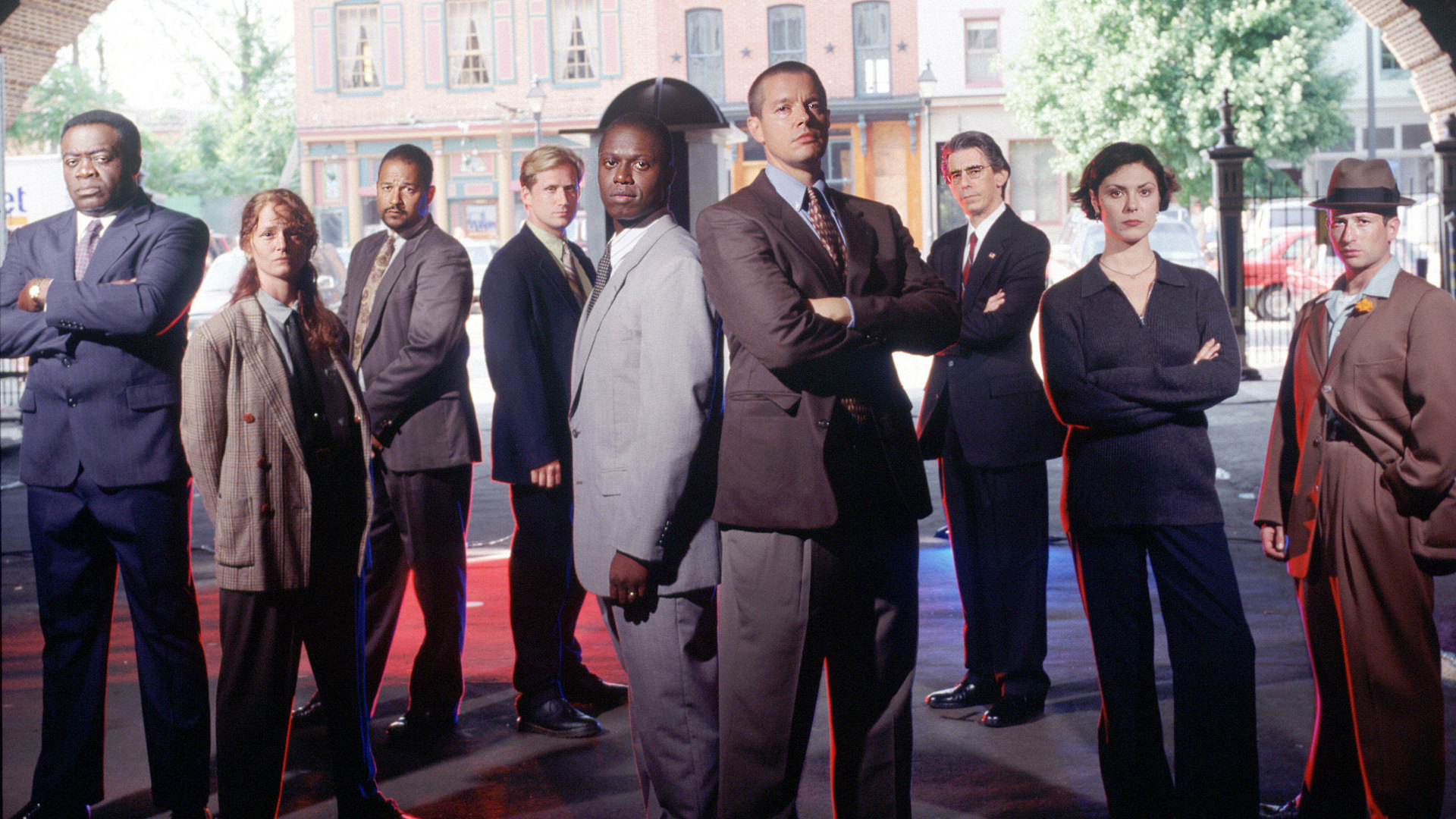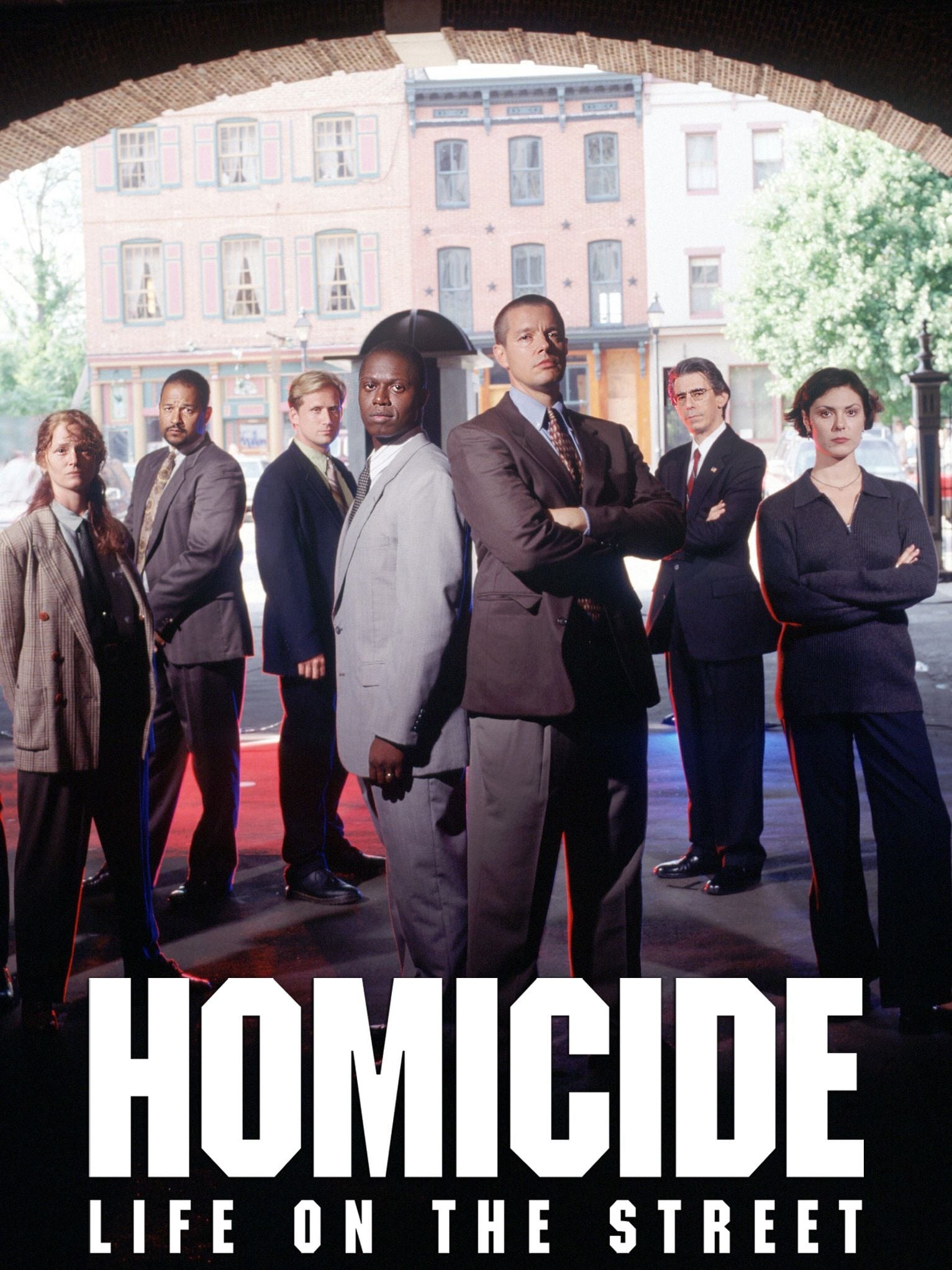Homicide: Life On The Street – The Untold Story Of Crime, Justice, And Humanity
**Hey there, folks. If you've ever been glued to your TV screen watching the gritty, unfiltered world of "Homicide: Life on the Street," you're about to dive deep into the heart of this legendary series. It's not just a show; it's a raw glimpse into the lives of detectives, victims, and the urban jungle where justice is served—or sometimes, it isn't. This is where reality meets drama in ways that'll leave you questioning everything you thought you knew about crime and justice. So, buckle up because we're about to unravel the layers of this iconic series.**
When "Homicide: Life on the Street" first hit the airwaves back in the '90s, it was like nothing anyone had seen before. Forget the flashy crime dramas filled with over-the-top car chases and gunfights. This show was all about the nitty-gritty details—the long hours, the paperwork, and the emotional toll of chasing justice in a city that doesn't sleep. It wasn't just entertainment; it was a mirror reflecting the harsh realities of urban life.
But why does "Homicide: Life on the Street" still resonate with audiences today? Well, it’s not just the gripping storylines or the unforgettable characters—it's the way the show tackled real-life issues head-on. From racial tensions to systemic corruption, this series didn't shy away from the tough topics. And that’s what makes it such a powerful piece of television history. So, let’s break it down and see what makes this show a true masterpiece.
- Jordan Love Injury The Inside Story On Recovery Impact And Future Prospects
- Belle Gibson The Story Of A Wellness Influencer Who Captivated The World
Table of Contents
- What is Homicide: Life on the Street?
- A Brief History of the Show
- Meet the Key Characters
- Why Realism Matters in Crime Dramas
- The Show's Impact on Pop Culture
- Common Criticisms and Controversies
- Exploring the Show's Themes
- Behind the Scenes Secrets
- Homicide vs. Other Crime Dramas
- The Legacy and Future of the Series
What is Homicide: Life on the Street?
"Homicide: Life on the Street" is a crime drama that aired from 1993 to 1999, and it’s widely regarded as one of the most authentic portrayals of police work ever seen on television. Set in Baltimore, Maryland, the show follows a team of homicide detectives as they navigate the complexities of solving murders while dealing with personal and professional challenges. Unlike other crime shows, this one didn't rely on flashy stunts or predictable plotlines. Instead, it focused on the day-to-day grind of being a cop in a city plagued by violence and inequality.
Why It Stands Out
One of the reasons "Homicide: Life on the Street" stands out is its commitment to realism. The writers drew inspiration from real-life cases and interviews with actual police officers, giving the show an authenticity that resonated with audiences. Plus, the characters were far from perfect—flawed, human, and sometimes downright frustrating. But that’s what made them so relatable. You weren’t just watching a show; you were living the lives of these detectives, one episode at a time.
- Willard Ford The Unsung Hero Of Modern Design And Innovation
- Chyler Leigh Rising Star In The World Of Hollywood
A Brief History of the Show
Created by Tom Fontana, "Homicide: Life on the Street" was based on David Simon’s book "Homicide: A Year on the Killing Streets," which chronicled his experiences embedded with the Baltimore Police Department’s homicide unit. The show premiered on NBC in 1993 and quickly gained a cult following despite facing challenges like low ratings and network interference. Over its seven-season run, the series received numerous awards and nominations, cementing its place in television history.
How It Evolved Over Time
As the show progressed, it tackled more complex and controversial issues, such as police brutality, drug addiction, and the impact of crime on families. Each season brought new challenges for the characters, both personally and professionally, making the show feel like a living, breathing entity. By the time it wrapped up in 1999, "Homicide: Life on the Street" had left an indelible mark on the world of crime drama.
Meet the Key Characters
Let’s talk about the heart and soul of "Homicide: Life on the Street"—the characters. From the grizzled veterans to the eager rookies, each member of the homicide unit brought something unique to the table. Here’s a quick rundown:
- Detective John Munch: The quirky, wise-cracking detective who became a fan favorite. Played by Richard Belzer, Munch was known for his sarcastic humor and sharp wit.
- Bayliss and Pembleton: The dynamic duo at the center of the show. Jimmy Smits and Andre Braugher delivered powerhouse performances as these two detectives who balanced each other out perfectly.
- Al Giardello: The tough but fair captain of the unit, played by Yaphet Kotto. Giardello was the glue that held the team together, often serving as a voice of reason when things got chaotic.
These characters weren’t just names on a screen; they were people you cared about, rooted for, and sometimes yelled at your TV because of their stubbornness.
Why Realism Matters in Crime Dramas
In a world filled with overly dramatized crime shows, "Homicide: Life on the Street" stood out because of its dedication to realism. Every detail—from the way the detectives interacted with suspects to the mundane tasks of paperwork and evidence collection—was meticulously crafted to reflect real-life police work. This approach not only made the show more believable but also gave viewers a deeper understanding of the challenges faced by law enforcement officers every day.
How Realism Enhances Storytelling
Realism in storytelling allows audiences to connect with the material on a deeper level. When you see characters struggling with the same issues as real people, it creates a sense of empathy and understanding. For "Homicide: Life on the Street," this meant exploring the moral ambiguities of policing and the emotional toll it takes on those in the profession.
The Show's Impact on Pop Culture
"Homicide: Life on the Street" may have ended over two decades ago, but its influence is still felt today. It paved the way for other critically acclaimed crime dramas like "The Wire" and "The Sopranos," setting a new standard for television storytelling. Its focus on character development, social issues, and moral complexity inspired a generation of writers and producers to push the boundaries of what could be achieved in the medium.
Legacy Beyond the Screen
But the impact of "Homicide: Life on the Street" extends beyond entertainment. It sparked important conversations about race, class, and justice in America, encouraging viewers to think critically about the systems that govern our society. And that’s the mark of a truly great show—one that changes the way we see the world.
Common Criticisms and Controversies
Of course, no show is without its critics. Some viewers felt that "Homicide: Life on the Street" was too slow-paced or lacked the excitement of other crime dramas. Others took issue with its portrayal of law enforcement, arguing that it painted too bleak a picture of the profession. However, these criticisms only highlight the show’s willingness to tackle difficult subjects and challenge conventional narratives.
Addressing the Critiques
While it’s true that "Homicide: Life on the Street" wasn’t for everyone, its willingness to embrace complexity and nuance set it apart from the pack. It wasn’t about giving viewers easy answers; it was about asking tough questions and leaving them to wrestle with the implications.
Exploring the Show's Themes
At its core, "Homicide: Life on the Street" is a show about people—how they interact, how they struggle, and how they find meaning in a chaotic world. Themes of justice, morality, and redemption run throughout the series, challenging viewers to consider what it truly means to seek justice in an imperfect system.
Key Themes in Focus
- Justice vs. Revenge: Many episodes explore the fine line between seeking justice and exacting revenge, raising questions about the role of emotion in law enforcement.
- Systemic Inequality: The show doesn’t shy away from addressing the systemic issues that contribute to crime, highlighting the intersection of race, class, and power in urban America.
- Human Connection: Despite its focus on crime, the series is ultimately about relationships—between colleagues, friends, and even enemies.
Behind the Scenes Secrets
Did you know that many of the actors on "Homicide: Life on the Street" drew inspiration from real-life police officers? The show’s creators went to great lengths to ensure authenticity, even consulting with members of the Baltimore Police Department during production. This attention to detail helped create a show that felt like a genuine reflection of the world it depicted.
Fun Facts About the Show
- The iconic opening sequence, featuring the detectives entering the squad room, was inspired by a similar scene in the movie "Serpico."
- Several episodes were written by former police officers, lending even more credibility to the series.
- Richard Belzer’s character, Detective John Munch, became so popular that he was spun off into his own show, "Law & Order: Special Victims Unit."
Homicide vs. Other Crime Dramas
While "Homicide: Life on the Street" shares some similarities with other crime dramas, it stands apart in several key ways. Unlike shows that rely on flashy visuals or twist-filled plots, "Homicide" focuses on character-driven storytelling and realistic depictions of police work. This approach may not have appealed to everyone, but it resonated deeply with those who appreciated its depth and complexity.
What Sets It Apart
Where other shows might choose to wrap up a case neatly in 45 minutes, "Homicide" often left loose ends untied, reflecting the messy reality of criminal investigations. It also didn’t shy away from showing the emotional toll of the job on its characters, making them feel like real people rather than one-dimensional archetypes.
The Legacy and Future of the Series
Even after all these years, "Homicide: Life on the Street" continues to inspire new generations of writers, producers, and viewers. Its influence can be seen in modern crime dramas that prioritize character development and social commentary over spectacle. And while the original series may be over, its legacy lives on through reruns, fan communities, and the countless creators it has inspired.
What’s Next for Fans?
For fans of "Homicide: Life on the Street," there’s always hope for a revival or spin-off. With streaming services dominating the entertainment landscape, there’s never been a better time for a show like this to make a comeback. Until then, we can continue to revisit the classic episodes and marvel at the brilliance of this groundbreaking series.
Kesimpulan
So, there you have it—a deep dive into the world of "Homicide: Life on the Street." From its humble beginnings to its lasting legacy, this show has proven that crime dramas can be both entertaining and thought-provoking. It’s a testament to the power of storytelling and the impact it can have on audiences.
Now, here’s where you come in. Did you love the show? Hate it? Or maybe you’ve never seen it before but now you’re curious? Let us know in the comments below. And don’t forget to share this article with your fellow crime drama enthusiasts. Who knows? You might just spark a new appreciation for one of TV’s greatest treasures.

Homicide Life On The Street (TV Series 1993 1999)

Homicide Life on the Street (TV Series 19931999) Posters — The

Homicide Life on the Street (TV Series 19931999) Posters — The